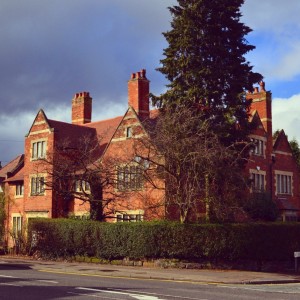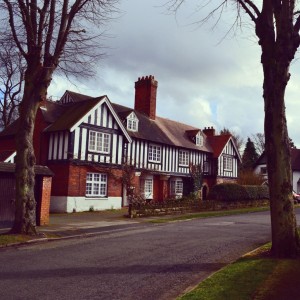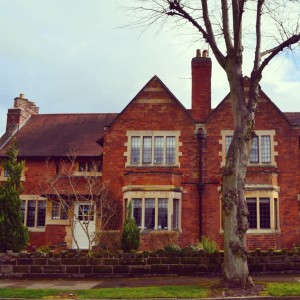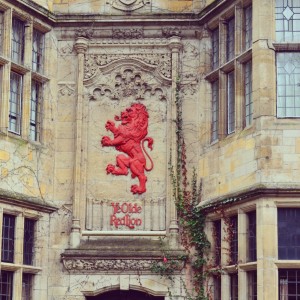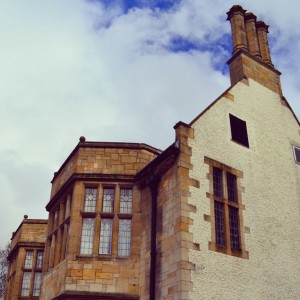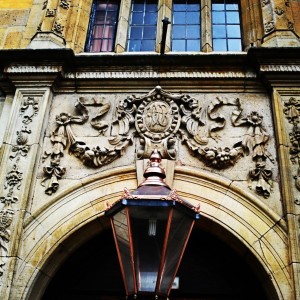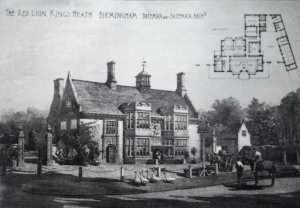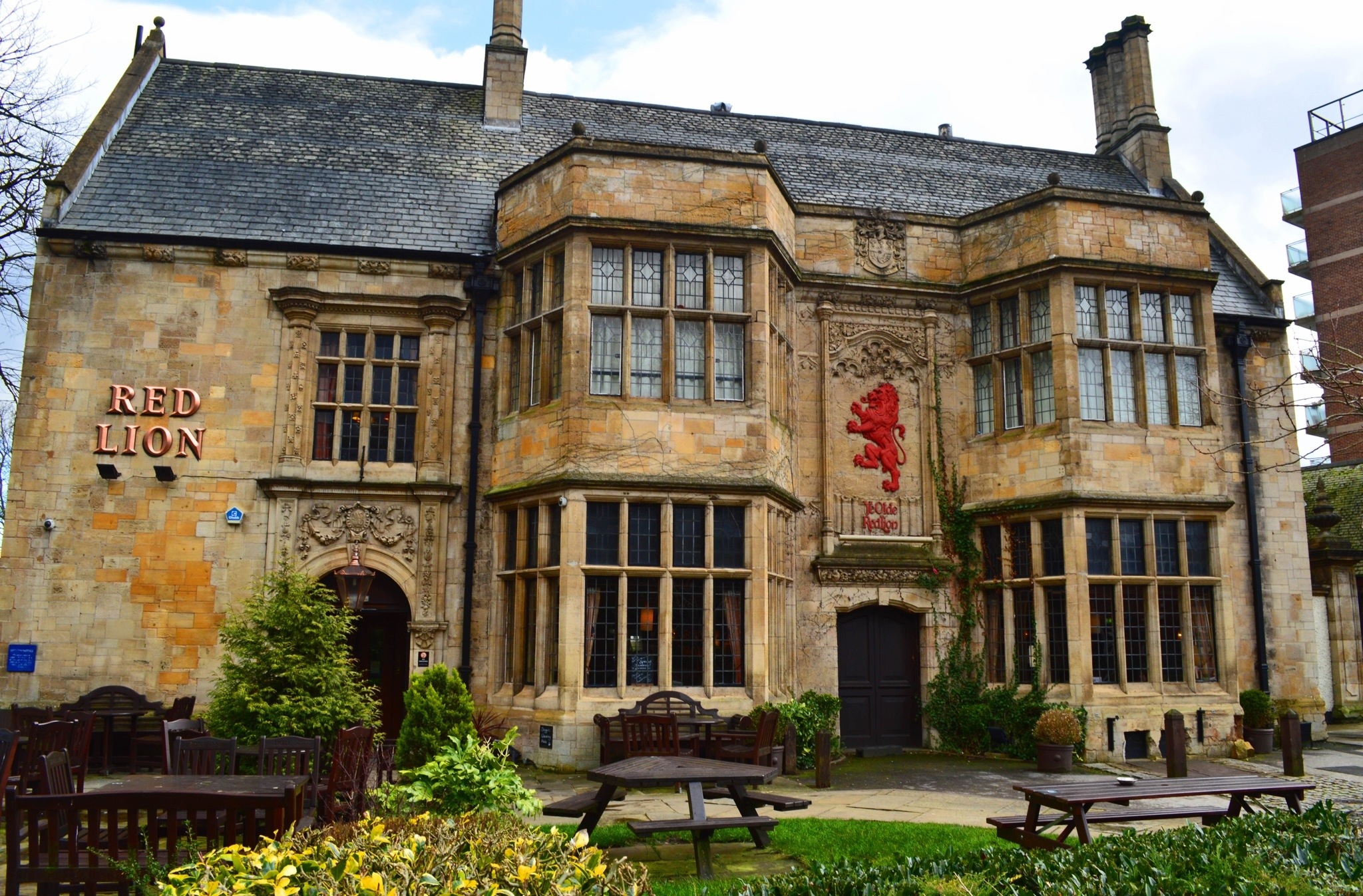Arts & Crafts Architecture in Birmingham IV: CE Bateman
 I didn’t have to look far for the inspiration for my next Arts and Crafts post. Firstly, Charles Edward Bateman was from Castle Bromwich – possibly its third most famous export after the Spitfire and the drummer out of Duran Duran – just up the hill from Water Orton, where I grew up. Secondly, the greatest concentration of his buildings are in Kings Heath, at the top of my road.
I didn’t have to look far for the inspiration for my next Arts and Crafts post. Firstly, Charles Edward Bateman was from Castle Bromwich – possibly its third most famous export after the Spitfire and the drummer out of Duran Duran – just up the hill from Water Orton, where I grew up. Secondly, the greatest concentration of his buildings are in Kings Heath, at the top of my road.
His father John was a founding member of the Birmingham Architectural Association, whom Bateman Junior joined in practice in 1887 (as Bateman & Bateman). However, he soon broke from his father’s Gothic style in favour of older local vernacular, and in particular that of the Cotswolds. Bateman became known for grand Arts and Crafts houses and several vicarages – like the beautiful one pictured above at St Peter’s, Maney Hill, Sutton – and later his practice became a leading designer of Birmingham’s ‘reformed pubs’ (hopefully more on those another time…).
One of Bateman’s most important early commissions was for the Priory Trust Company, formed by the Cartland family. The Cartlands were wealthy Birmingham brass-founders (from whom Dame Barbara Cartland is apparently descended), who owned the Priory, Hazelwell Hall and all of what is now Kings Heath Park – their house is now the Horticultural Training Centre.
In the early 1890s, the Priory Trust asked Bateman to lay out a middle class suburb on its land, which at the time would have been at the very edge of the city. The houses are in a variety of styles informed by Arts and Crafts thinking. The two either side of Cartland Road at the junction with Vicarage Road (The Squirrels and 2 Cartland Road), as well as The Gables further down the hill and Maycroft and Woodlands on Stanley Road, are in red brick with stone dressings. Others on Vicarage Road are tile hung, and probably the pick of the bunch (4-6 Stanley Road) is half timbered. The houses running down the left side of Cartland Road are by another prominent and prolific Birmingham Arts and Crafts architect, William de Lacy Aherne. Taken together, the Cartland Estate is a small Arts and Crafts suburb.
By 1903, the Priory Trust had decided the middle class residents needed an ‘inn’ befitting their status. Bateman responded with the Red Lion, “a grand inn in a Cotswold limestone vernacular style” according to the listing. Just in case the architectural references were considered too subtle, Bateman added a rampant lion and the words ‘Ye Olde Red Lion’ in a scroll beneath. The Red Lion was important both for Birmingham and Bateman, as it was the first of the suburban reformed pubs and led to Bateman & Bateman designs for many later pubs (including nearby The Hazelwell, which stands roughy where Hazelwell Hall was, in typical half-timbered 1930s Brewer’s Tudor style).
The bucolic scene of a wandering gaggle of geese and a man on horseback envisaged by Bateman in his architectural sketch has been compromised somewhat by an unfortunate tangle of ugly fencing, street lighting and signage. In defence of the Highways department, this is a busy road on the Outer Circle bus route, but surely they could take a bit of care given the number of listed buildings close by. (The drawing is taken from the exhaustive Birmingham’s Victorian & Edwardian Architects, local published by the local group of the Victorian Society.) Otherwise the outside of the building at least still captures that feel of an ancient rural inn Bateman was aiming for; inside, there has been quite a lot of alteration and it is sometimes difficult to work out what is Bateman’s ‘ye olde’ timber interior or more recent attempts at the same thing.
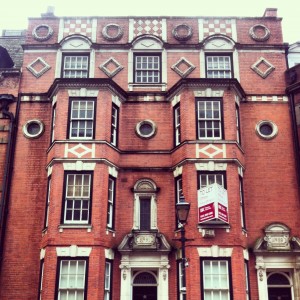 On our last visit the rural idyll flickered in the form of a roaring log fire, but was dimmed slightly by an ’80s night whose breadth extended to Shaggy’s ‘Oh Carolina‘, which topped the charts as late as March 1993. (It’s not only the architecture that plays fast and loose with history…). More in keeping with Arts and Crafts movement ideals is the Red Lion Folk Club which has been running at the pub for over 40 years.
On our last visit the rural idyll flickered in the form of a roaring log fire, but was dimmed slightly by an ’80s night whose breadth extended to Shaggy’s ‘Oh Carolina‘, which topped the charts as late as March 1993. (It’s not only the architecture that plays fast and loose with history…). More in keeping with Arts and Crafts movement ideals is the Red Lion Folk Club which has been running at the pub for over 40 years.
Later, Bateman taught at the Birmingham School of Art, and designed several houses on the Four Oaks estate, where he lived until retirement to the Cotswolds. He also designed commercial buildings like the Grade II* listed 89-91 Cornwall Street and the Westley Richards gun factory, recently demolished to make way for the Selly Oak bypass. His masterpiece is probably the Grade I listed The Homestead in Edgbaston.
Charles Bateman died in 1947, and was buried at St Mary & St Margaret’s in Castle Bromwich, a church he helped to restore in his younger days.


